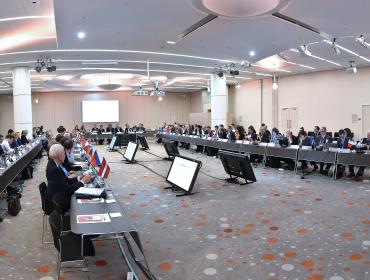
BEREC Workshop on secure and reliable connectivity from LEO satellite fleets
On 13 April 2023 (13:30 – 16:00 CET), BEREC hold a virtual workshop on secure and reliable connectivity from LEO satellite fleets, focusing mainly on direct-to-cell connectivity.
BEREC invited interested stakeholders on direct-to-cell connectivity (e.g. LEO satellite operators, terminal equipment vendors, telcos) and other providers of upcoming new services available from low earth orbit / mixed orbit satellite fleets to express their interest to present to BEREC.
Presenting stakeholders made a targeted presentations by addressing some of the Questions/themes (see below).
The workshop was well attended by 179 participants. The audience mainly included experts and senior policy/decision makers in the national regulatory authorities and other competent authorities as well as representatives from vendors, terrestrial and satellite communication companies, advisory/consultancy firms, regulatory intelligence providers, associations, organizations, etc.
BEREC thanks the participants and speakers for sharing many interesting views!
The outcome of the workshop will be a summary report and a list of potential next steps for NRAs to better engage with this topic. It may also generate demand for another workshop or future work by BEREC. The summary report will be published after it has been approved during the upcoming BEREC ordinary plenary meeting on 8-9 June 2023.
Questions/themes for presenting stakeholders
-
Views on routes to market
- Status of routes to market access
- What types of market issues (access) may develop in future?
- Whether regulation for direct satellite-to-mobile technology is needed and why?
-
Views on competition and differentiation
- What are potential competition issues
- Whether the sector considers there to be bottlenecks which are in the domain of the national telecommunications regulator?
- Interplay with gigabit society and connectivity ambitions.
BEREC does not have competence in spectrum assignment, so issues which are being dealt with at ITU level (or through compatibility studies within the CEPT) were not discussed in detail during the workshop.
-
Technical: Equipment/technology and sustainability issues
- Standardization status
- Bit rate capabilities and routing issues
- What is the impact on sustainability?
- What is being done/what is the capability to offer network redundancy/resiliency?
- Other information that may complement discussions and presentations in other fora (such as at CEPT workshop 20, 21 November 2022)


